Tags: Supermassive black hole

James Webb Space Telescope Finds Most Distant Pair of Colliding Black Holes, Raising Questions Regarding Theories of Cosmology
NASA Video Provides Visualization of a Flight Toward Event Horizon of a Supermassive Black Hole
Gemini North Telescope Measures Heaviest Pair of Supermassive Black Holes Ever Found, Provides Insight on Merging of Binary Systems
JWST Discovers 'Extremely Red' Supermassive Black Hole in Ancient Universe, Challenging Galactic Growth Theories

NASA's James Webb Space Telescope, Chandra X-Ray Observatory Find Most Distant Black Hole Ever Seen

What Is a Black Hole? How Big Can It Get?
Supermassive Black Hole 10 Billion Light Years Away Dramatically Flare to Life
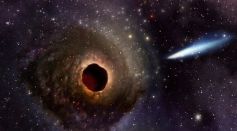
Milky Way's 'Sagittarius A' Black Hole Might Not Be as Dormant as Previously Thought
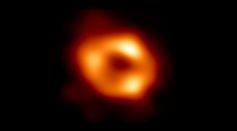
Eerie Echo Reveals Intense Activity of Supermassive Black Hole in the Milky Way's Core

Supermassive Black Hole Captured Swallowing a Star About 137 Million Light-Years Away; It's the Closest Scientists Have Ever Seen
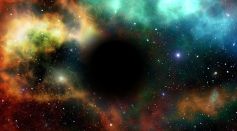
AI Boosts Image of Supermassive Black Hole M87 to Full Resolution, Leading to Stunning Results
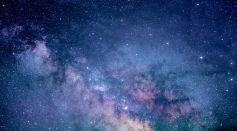
Hubble Telescope Finds Rare Double Quasars on the Verge of Collision; These Cosmic Objects Serve as Hallmarks of the Early Universe, Scientists Say

Previously Classified Radio Galaxy Is Now a Blazar With Supermassive Black Hole That Faces Earth, New Research Suggests

Rare Merger of Trio Quasars Leads to the Formation of Ultramassive Black Hole; Resultant Cosmic Monster is 300 Billion Times More Massive Than the Sun

ESO Astronomers Reveal Supermassive Black Hole Pointing Towards Earth, 100 Times More Powerful than Gamma Ray-Burst

Two Supermassive Black Holes Predicted to Collide Within Three Years: Here's What to Expect

Scientists Discover How Supermassive Black Hole Merge Using a New Mechanism

Fastest Star Completed Its Orbital Period Around Supermassive Black Hole Sagittarius A* at the Center of Milky Way Under 4 Years

Milky Way’s Monster Black Hole Sagittarius A* Discovered, Supports Albert Einstein's Theory of General Relativity
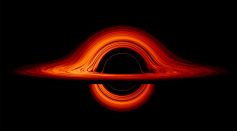
Chandra Telescope Captures Intermediate Black Holes in Star-Filled Galaxies, Explains How They Obtain Absurd Sizes
Most Popular

Largest Known Volcanic Aquifer Discovered Beneath Oregon's Cascades

New 'Supergiant' Sea Bug Found in South China Sea, Named After Darth Vader

Mediterranean Sea Was Refilled by a Catastrophic Flood Millions of Years Ago

Mysterious Cosmic Waves That Sound Like Birds Detected in Unexpected Space Region




